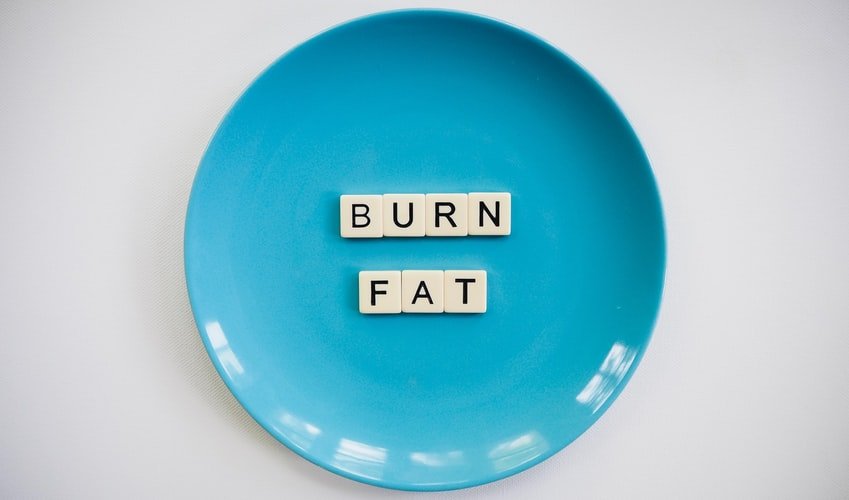The BEST Resistance-Training Program For Fat Loss
Today, the need for maximal results in the shortest amount of time has led exercisers to seek more effective and efficient methods of fat loss and body shaping. Along with high-intensity interval training, resistance training in a variety of forms is beneficial at promoting fat reduction.
The fitness industry has responded by offering a range of resistance-training methods, regimens, and even brands to those seeking to lose body fat while boosting general strength and vitality. Naturally, each technique, procedure, and brand makes a “fat-loss miracle” promise, guaranteeing maximum results in the shortest amount of time.
How can you assist your customers in navigating the maze of gimmicks, gadgets, and gurus to decide which resistance-training regimens are truly the BEST for fat loss? To address this topic, it is necessary to understand the dynamics of how the physiological systems of the human body respond to and adapt to various resistance-training regimens.

Resistance exercise aids in fat reduction in a variety of ways. For one thing, resistance exercise promotes the growth of lean muscle mass. Higher lean muscle mass necessitates an increased energy expenditure need, both during activity and during rest. In other words, those with higher lean muscle mass burn more calories throughout the day.
Resistance training, in conjunction with high-intensity interval training, has also been shown to increase the quantity of oxygen required for the body to recuperate following an exercise session. Excess post-exercise oxygen consumption, or “EPOC,” is a physiological condition that results in an increase in net calorie expenditure following a workout. In plain English, you continue to burn calories even after you stop exercising. Additionally, the hormonal milieu generated by vigorous resistance exercise promotes muscle growth and fat utilization.
Almost every resistance-training program designed for fat reduction aims to improve lean muscle mass and EPOC while also establishing a favorable hormonal environment for muscle growth and fat loss. Numerous protocols modify several training factors, including the exercises used, the volume of training, and the intensity of training, to persuade the body to continue growing muscle and burning fat.
Almost any resistance-training regimen will help reduce body fat moderately in the short-run (assuming proper nutrition is observed). To ensure that a program remains successful (the best), it’s critical to understand how altering three critical training factors affects fat loss.
Exercises Involved
Almost every popular resistance-training activity has some beneficial effect on the body. However, certain workouts are superior to others when it comes to fat reduction that is safe, effective, and efficient. Squats, deadlifts, Olympic lifts, pull-ups, and push-ups are the most effective exercises for maximum fat reduction and muscle growth. These complex exercises recruit a significant amount of muscle, necessitating increased oxygen consumption and hormonal reaction, and should be emphasized in an effective resistance-training program for fat loss.
Maintain a somewhat regular set of workouts over the weeks or months of a given training “block” (period of training with a specific goal). Exercises can be varied between training blocks to avoid overuse and to allow for novel approaches to increase muscular development and fat utilization. For instance, incorporate barbell back squats into a program for 12 weeks and then transition to another squat or lower-body workout variant (front squat, lunge, etc.) for another 12 weeks.
Compound movements are prioritized in the “best” resistance-training regimen for fat reduction.

Volume of Instruction
The term “training volume” refers to the total number of sets, repetitions, or duration under strain, as well as the amount of resistance (weight) used during a certain training day, month, or another period. This is computed as the product of the number of (sets X repetitions or time under stress X weight) exercises performed throughout a training day, week, or month.
Increased training volume is typically related to increased lean muscle mass (i.e., muscular hypertrophy), which contributes significantly to the body’s capacity to metabolize calories and fat. As seen in the above equation, this may be achieved by adjusting the number of sets, repetitions, or weight used during workouts.
For instance, assist your customers in progressing to four sets of ten repetitions rather than three sets of ten repetitions for a certain activity. Increase the number of repetitions of an exercise from eight to ten, or the time spent under muscular contraction from 30 to 40 seconds. Alternatively, instruct them to attempt the same number of sets and repetitions as a prior training session, but with a heavier weight. Additionally, additional training days might be added to enhance the overall volume.
The fitness industry recommends three to six sets of six to twelve repetitions at 50-85% of 1 RM for muscle growth training (repetition maximum). Resistance exercise performed following these principles appears to help develop lean muscle mass.
While increases in training volume may be related to fat-burning processes, it is critical to remember that these increases cannot be sustained permanently. The body’s tissues and central nervous system have a finite capacity for handling increasing levels of stress. Volume should be gradually increased over weeks or months, followed by a time of decreasing volume. This contributes to the avoidance of training plateaus, injuries, and boredom.
The “optimal” resistance training program for fat reduction alternates specified times of increasing training volume with defined periods of decreasing training volume.
Intensity of Training
The term “intensity of training” refers to the proportion of output generated by an all-out effort, such as a one-rep max (1RM) or repetitions to failure. Training intensity has a significant effect on the hormonal response to exercise and, as a result, on lean muscle mass and EPOC gains. And all of these factors contribute to an individual’s capacity to burn fat.
The intensity of training has been shown to aid in fat reduction in a variety of ways. To begin, increasing effort (% of an all-out effort) generates considerable training stress, which results in favorable hormone release and continuous oxygen consumption following exercise. To optimize the efficacy of this progression, it is advised to provide adequate rest time (two minutes or more) between sets. Additionally, optimal recovery time between sets assists in the development of strength. Strength gains may be used to improve both the overall intensity of training and the amount of exercise.
However, it looks as if the most important factor contributing to fat loss during resistance training is increasing training intensity by reducing the rest time between sets. When rest time is reduced, the body is subjected to substantial metabolic stress. As a result, a significant hormonal reaction occurs, allowing fat to be used and muscle to be formed. Additionally, it looks as if decreasing rest durations has the greatest effect on EPOC.
Super-sets (doing two exercises in succession with opposing muscle groups) and circuits (exercises performed rapidly with little rest) are both typical resistance-training programs that employ brief rest periods to improve training intensity.
A word of caution: While resistance training with brief rest intervals is sometimes lauded as the “best” method for fat reduction, it can produce considerable central nervous system exhaustion. This can result in a reduction in strength and total training intensity during extended training blocks, which has a detrimental effect on fat loss and raises the chance of injury. To achieve sustained, long-term fat reduction from a program, specified training blocks of weeks or months should alternate between times of optimum and suboptimal recovery between sets.
In terms of long-term programming, training intensity and volume frequently have an inverse relationship. Both affect fat reduction, thus it’s critical to design regimens that allow for optimal performance throughout distinct training blocks. When training intensity is increased (training at near-failure effort), the central nervous system soon fatigues, necessitating a reduction in training volume. To significantly increase training volume, absolute training intensity must be lowered. Attempts to simultaneously raise volume and intensity over an extended length of time result in tiredness, depletion, and, eventually, injury.
To maximize training intensity, the “optimal” resistance training program for fat reduction has blocks of both restricted rest and complete recovery exercise. Furthermore, specified training blocks should alternate between times of moderate-intensity and high volume and vice versa.
The oscillation of training intensity and volume is a foundational tenet of periodization, a highly successful and well-researched long-term training paradigm. Periodization, developed by the Soviets in the 1950s and 1960s, is the practice of varying the amount and intensity of training over training days, weeks, months, and even years.
When the training stimulus is altered strategically, the intended effect of the program (fat loss, strength gains, performance improvements, etc.) is maximized while the undesirable effect is minimized (fatigue, injury, stagnation).
The duration of each training block varies according to the individual’s demands. For the majority of personal-training clients who do not have a dedicated “competition season” for fat reduction, four- to six-week training blocks give sufficient stimulation for adaptation without causing undue tiredness or boredom. Maintain a generally regular pattern of workouts inside these training blocks. In this manner, participants gain confidence and proficiency with these motions, which eventually enhances the favorable results of a fat-loss program while decreasing the negative ones.
It’s critical to remember that any program’s fat-loss outcomes will be enhanced if adequate diet, sleep, and other lifestyle variables are handled.
To summarize, the most effective resistance exercise regimen for fat reduction is as follows:
- Prioritizes compound motions and maintains a reasonably constant pattern of movement throughout a training block.
- Increases training volume incrementally throughout individual and consecutive training blocks, alternating between blocks of increasing volume and decreasing intensity and vice versa.
- Within successive training blocks, utilizes intervals of ideal and sub-optimal recovery time while gradually increasing training intensity. Training blocks should alternate between high-intensity, low-volume sessions, and vice versa.
To ensure The BEST Resistance-training Program for Fat Loss works effectively when selecting a program, paradigm, or brand of resistance exercise to assist your clients in losing weight, check for the components listed above. No single strategy is infallible. The greatest regimens evolve and adapt in response to the body’s changes and growth.

